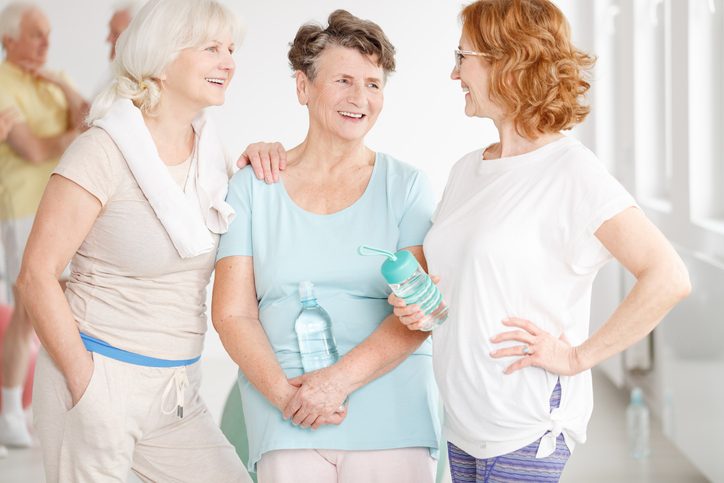Your Breast Pain Questions Answered
Anyone can get the occasional pain in the breast area, and these are some of the more common reasons you may experience it.

Breast pain (mastalgia) comes in all shapes and sizes from a shooting, sharp pain to dull or aching and may be only on one side or in both breasts.
Depending on your age it may be associated with your menstrual cycle – aching, tender, painful breasts are common in premenopausal women – or have some other common cause and can occur at any age.
The first thought is that it must be related to breast cancer, but be reassured it rarely causes breast pain as most breast lumps and tenderness have benign causes.
The pain can be related to something can be as simple as a pulled muscle, bruised rib or arthritis.
The first step is to learn to recognize the symptoms, understand the causes and learn what you do about it from medical help to some simple self help measures.
What can cause it?
Breasts are covered in sensitive, elastic skin that protects nerves, blood vessels and connective tissues, as well as ducts and lobes for producing breast milk.
Any kind of injury to them, whether accidental or deliberate through surgery, will produce bruising and an ache that will persist until the skin and underlying tissues have healed.
Just beneath your breasts are your chest wall muscles, rib cage, spine, heart and lungs. Aches and pains can come from inflammation of chest wall cartilage, arthritis in the breastbone, and bronchitis.
Muscles in your back and chest may be strained and pull against bones, sometimes causing soreness or sharp pains. When these pains happen close to your breasts, it can be very hard to pinpoint their location.
Hormonal changes can be one cause, weight gain, or even benign anatomical changes within the breast itself can also be implicated.
Basically there are three types: the most common is cyclical pain that fluctuates with your hormones.
These shift during your menstrual cycle and at menopause there is a change in the amounts of oestrogen, progesterone, and thyroid hormones which can cause breast tenderness.
The second type is non-cyclical breast pain and is usually related to internal anatomical changes, such as injury, surgery, infections or growth of large cysts.
Finally, there is pain that occurs just below your breast in bones, muscles, or nerves. It is usually is caused by a pulled muscle or bruised rib from bumping into a door or similar event that you may not even register at the time.
Cyclical breast pain
The most common type and linked to your hormonal ebb and flow. It usually occurs in both breast and you can chart its progress through your menstrual cycle.
Doctors often prescribe the contraceptive pill to regulate your period and relieve breast pain but such medication contains progestins – a synthetic progesterone – as well as oestrogen.
These can have side effects as their purpose is to change the hormone pattern as well as dealing with PMS and breast pain.
Non-cyclical breast pain
It is a reasonable hope that over time you will finally be beyond all that hormonal fluctuation, but perimenopause can have many of the features of cyclical pain.
In menopause itself non-cyclical breast pain is felt in a specific area of the breast, and usually in one breast only.
It is most frequently triggered by illness, infection or injury, weight gain, breast surgery or something as mundane as wearing the wrong size bra.
Fibromyalgia too can affect muscles, joints and connective tissues, creating overall pain or focused pain anywhere in the body, including the breasts.
Non-specific breast pain
If you have overdone it at the gym or the yoga class or been careless when negotiating objects and obstacles then this is the most likely cause.
Below your breast there are chest wall muscles that may spasm during times of anxiety and stress, causing pain that may last just a few seconds or several days.
Pain from tense chest wall muscles can occur on the left side only, or on the right.
Your heart is beneath your left breast, and if you have coronary heart disease, the sensation of pressure, squeezing, or heartburn of angina may cause you distress.
Also, as your oesophagus runs below your left breast then simple reflux can occasionally feel like left breast pain.
How to help yourself
Although the majority of breast pain is not a cause for concern, if it does persist, or you have a persistent lump or rash that does not ease with self-help measures, then it is always sensible to see your doctor for a checkup.
Things to try include hot or cold packs or generic painkillers like ibuprofen or paracetamol to reduce or resolve your breast pain.
Stress is an important factor so use dietary measures such as reducing caffeine, sugar, salt and processed foods as they will make it worse.
Any relaxation technique that helps you cope with your stress is worth trying such as meditation, yoga or having a warm bath with soothing oils like lavender, camomile, ylang ylang or sweet orange.
For pain that persists or seems related to a breast lump, infection, bones or muscles, you should visit your doctor as you may need a specific antibiotic to clear up the problem.
Because breast cancer is a serious concern for women at Menopause. You may also find this article helpful
https://anna.blog.wellsprings-health.com/breast-cancer-and-menopause-what-are-the-risks/


















